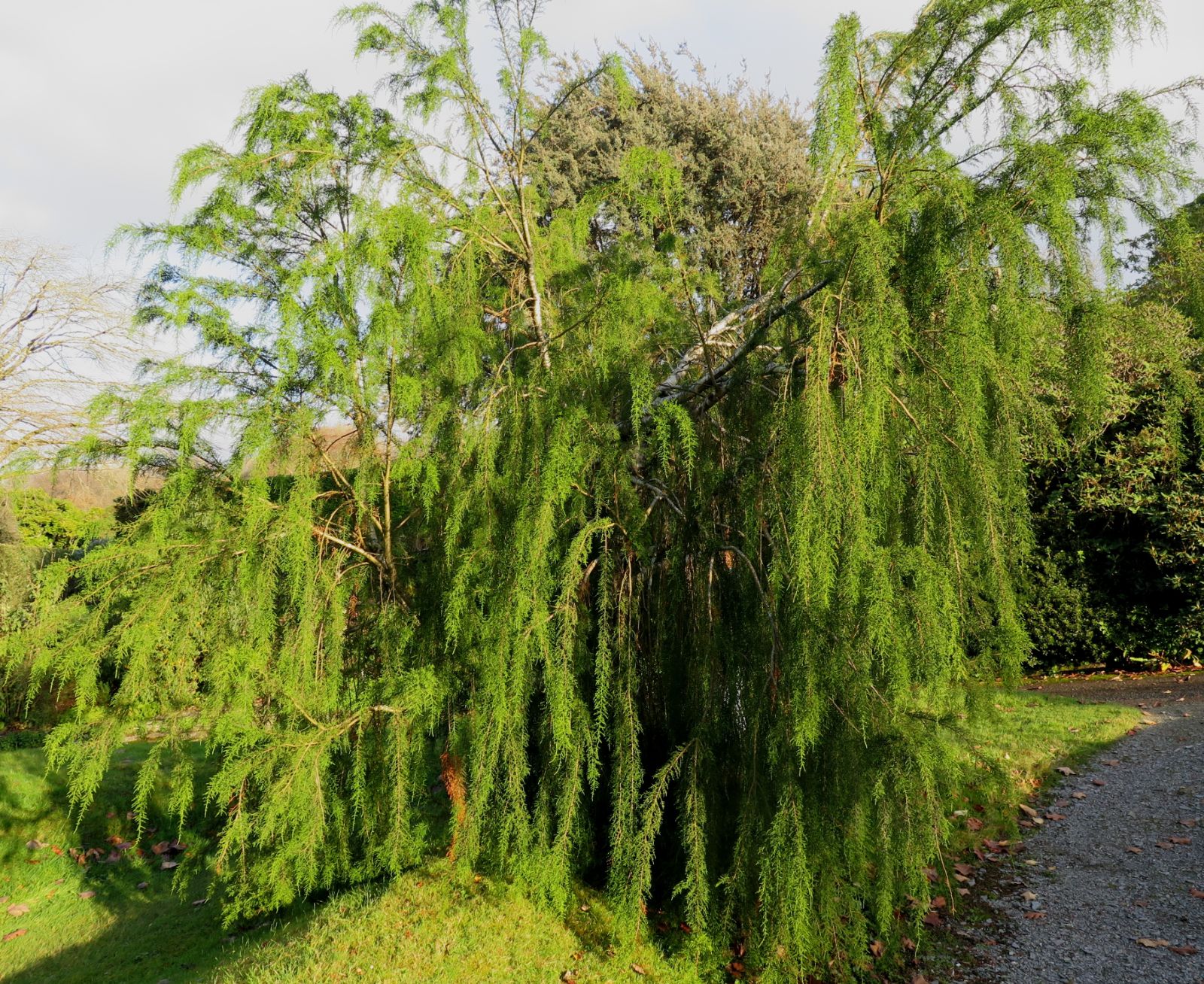Lagarostrobos
Sponsor
Kindly sponsored by
The British Conifer Society in memory of Lawrie Springate, International Conifer Registrar.
Credits
Tom Christian (2022)
Recommended citation
Christian, T. (2022), 'Lagarostrobos' from the website Trees and Shrubs Online (treesandshrubsonline.
Family
- Podocarpaceae
Evergreen, dioecious trees, occasionally monoecious. Adult leaves imbricate, adpressed, exposed surface rhomboid in shape. Pollen cones terminal, sessile, 1–1.5 mm. Seed cones terminal on short, decurved branchlets, 4–5 mm long. Seeds enclosed at the base by a dry, papery epimatium (scale). (Farjon 2017).
Along with several other Australasian Podocarpaceae, Lagarostrobos was previously included within a broad interpretation of Dacrydium. There were repeated calls for this broad-concept genus to be split from at least 1931, work which finally commenced in 1969 when David de Laubenfels segregated the genus Falcatifolium de Laub., distributed in the tropical Malesian floristic region (Molloy 1995). The remaining species were the subject of Chris Quinn’s important 1982 revision, which established the now widely accepted genera Halocarpus Quinn and Lagarostrobos Quinn, distributed in Tasmania and New Zealand, and resurrected Lepidothamnus Philippi with representatives in New Zealand and Chile (Quinn 1982). Sensu Quinn, Lagarostrobos included the famous Huon Pine of Tasmania (discussed below under L. franklinii) and the Silver Pine or Manoao of New Zealand (L. colensoi). In 1995 Molloy demonstrated that these two species differed in several important characters, which by then were widely considered to merit generic segregation within the Podocarpaceae, and he established the new genus Manoao to accommodate the Silver Pine (Molloy 1995; see M. colensoi).
As such, Lagarostrobus becomes a monospecific genus endemic to Tasmania. Lagarostrobos is distinguised from Manoao by its resinous bark, cones with 5–10 bracts separated by long internodes, and flattened seeds with a papery epimatia (cf. non-resinous bark, upcurved cones with 2–6 bracts separated by short internodes, and ovoid seeds with a fleshy epimatia) (Molloy 1995; Debreczy & Rácz 2011).

